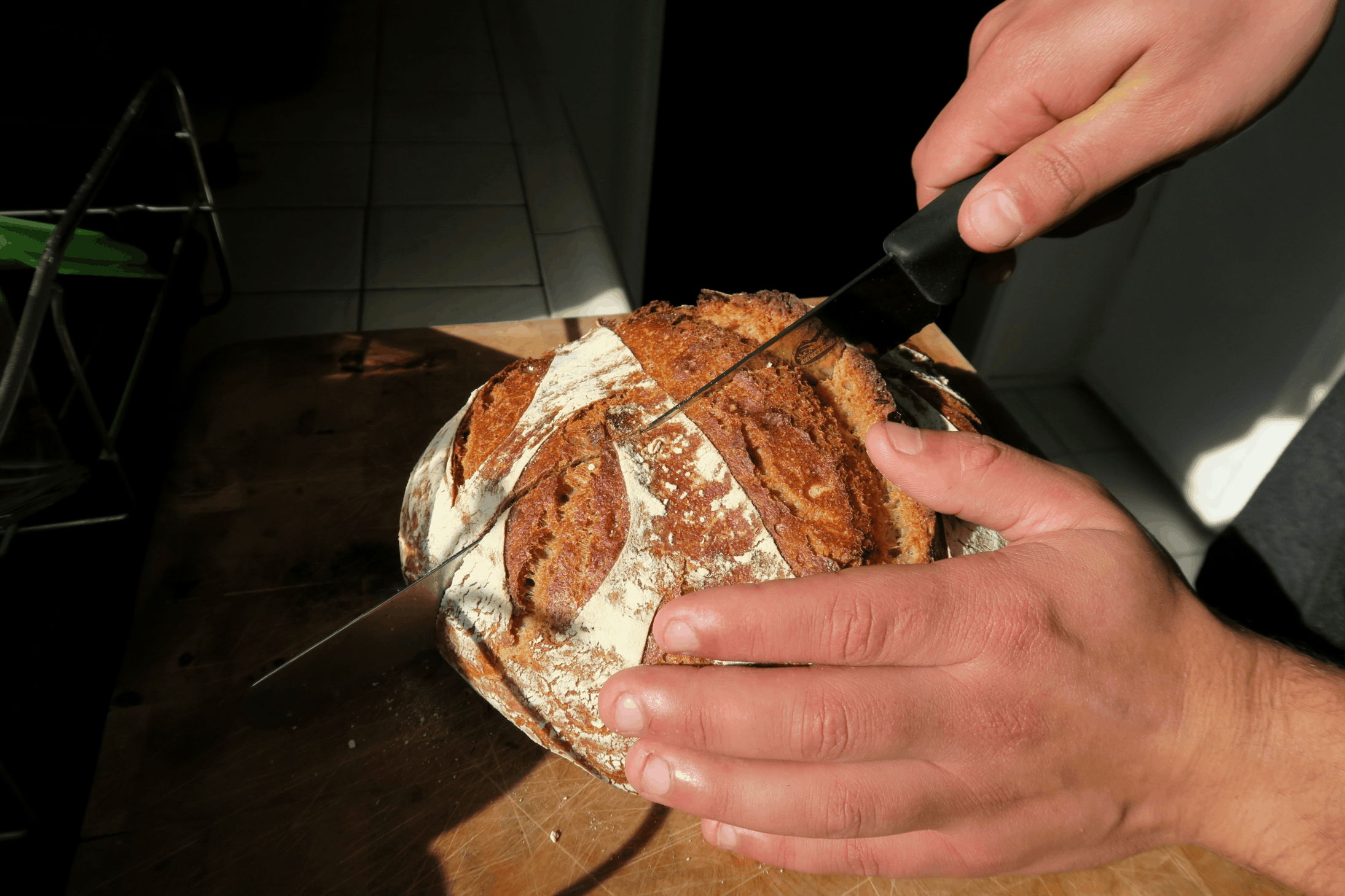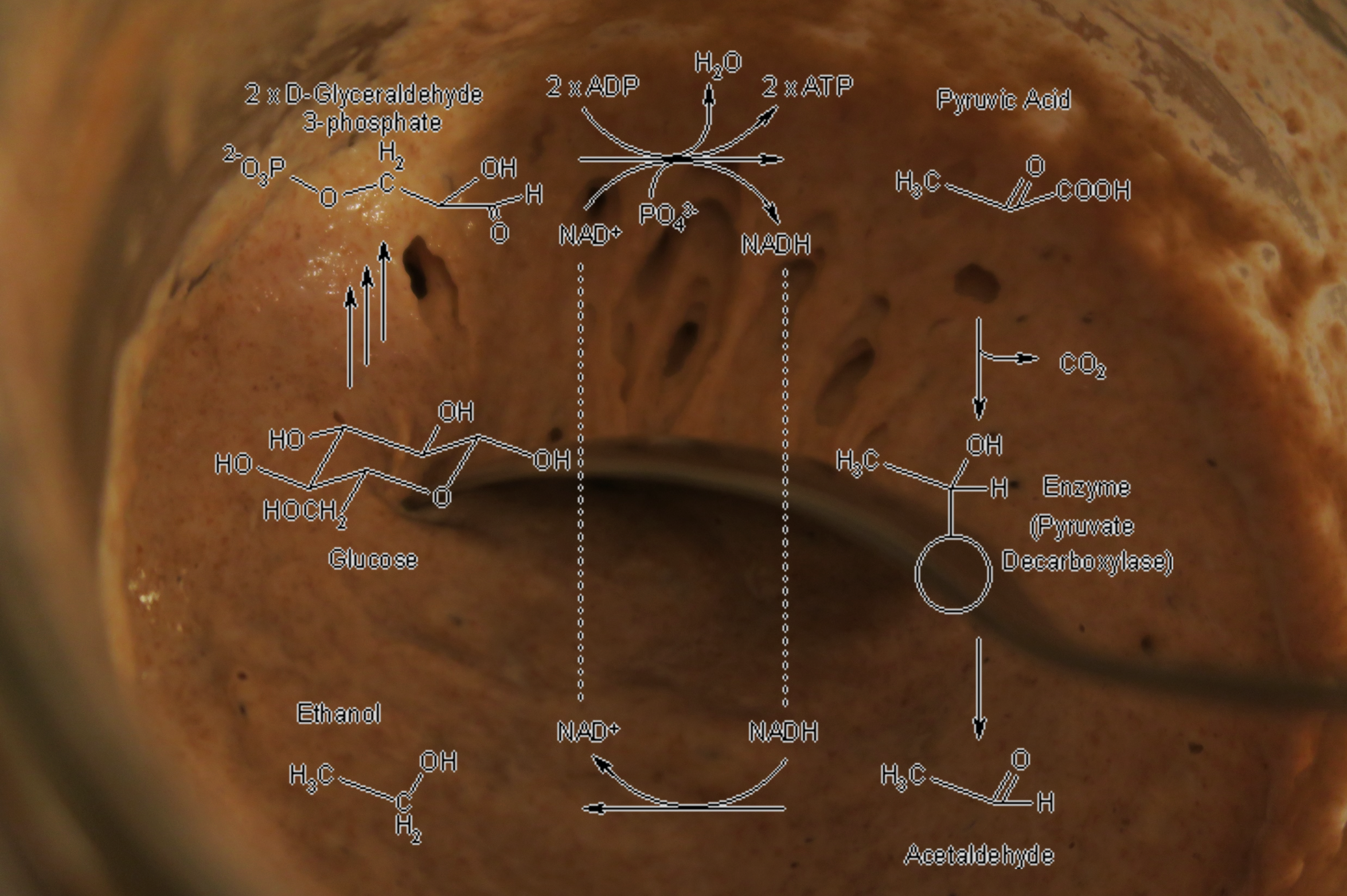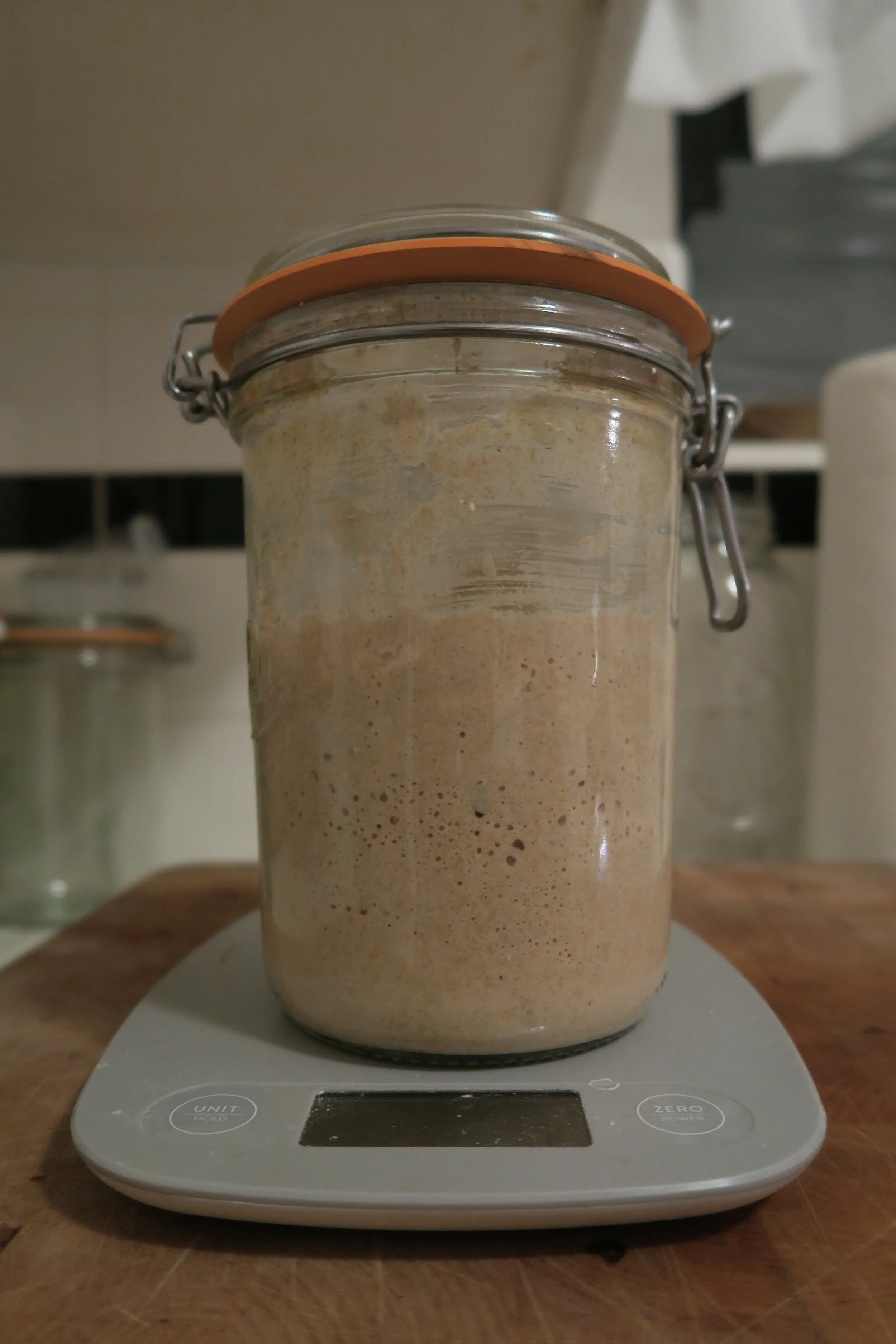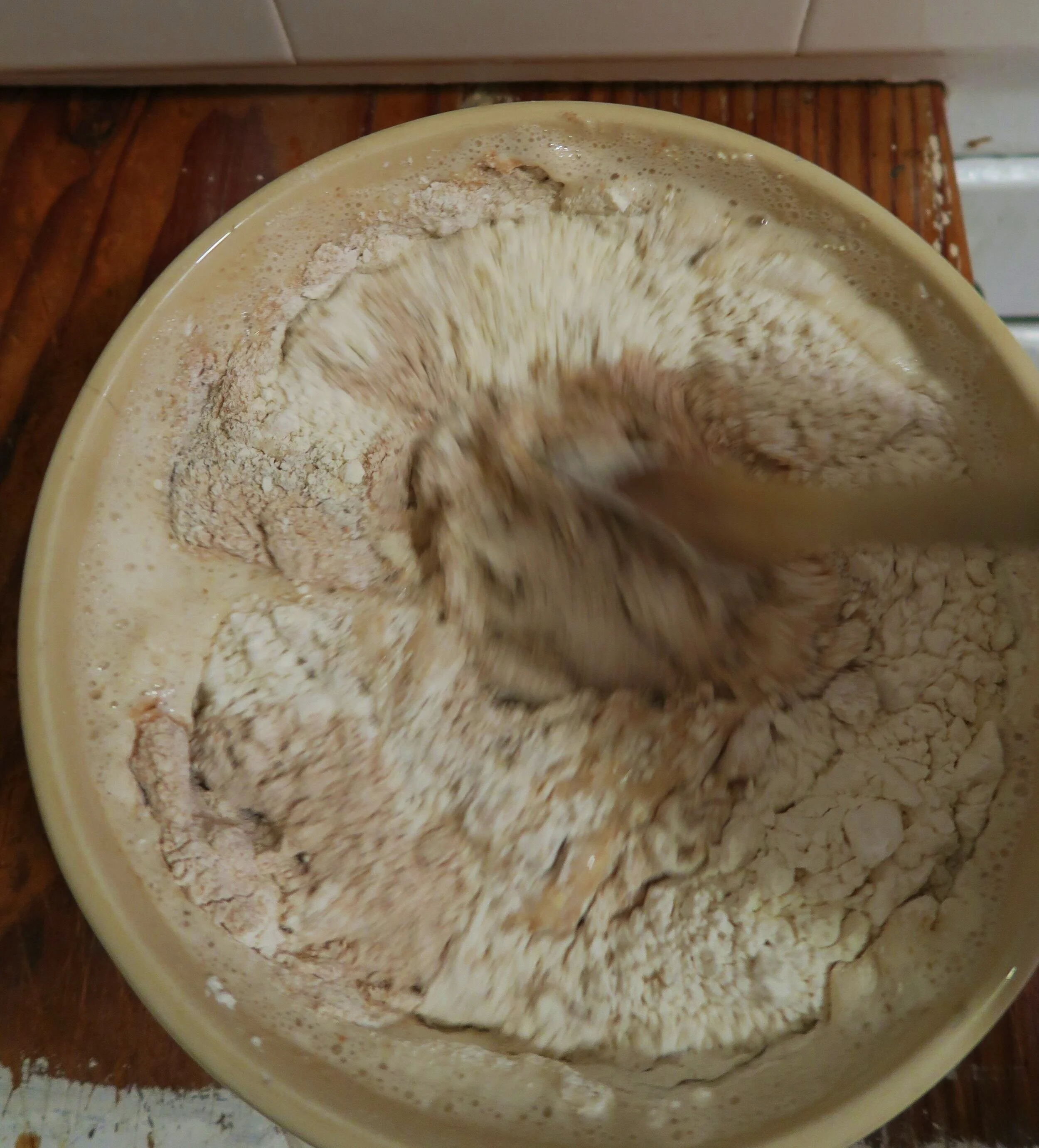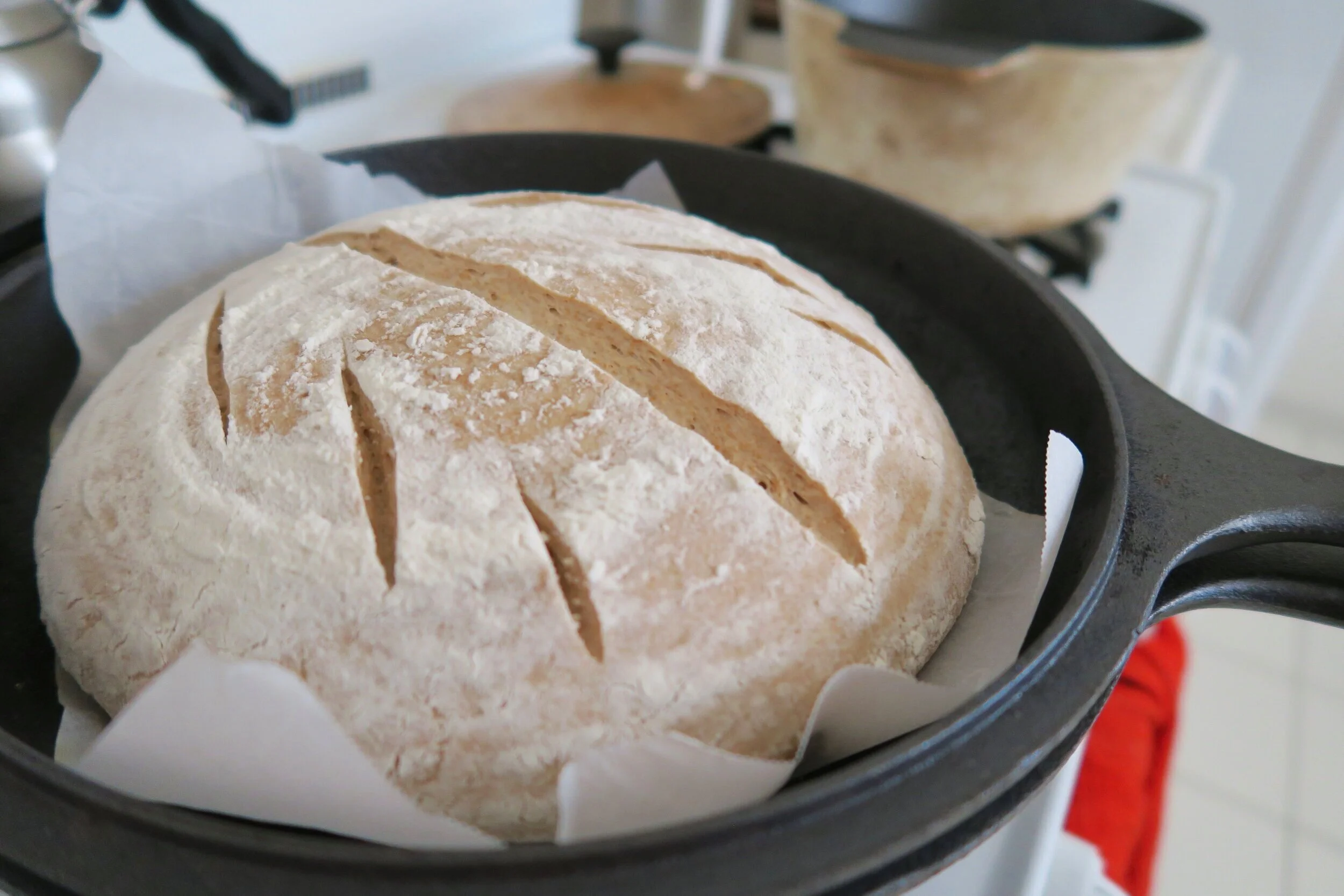Bread is really, really old.
Archaeological evidence suggests that primitive forms of bread began being made in Europe 30,000 years ago. That’s in the upper stone age. Before any written history, major human civilization, or technological revolution, there was bread, and people ate it.
Why bread?
It’s $3.99 from any market …
Bread is something which has sustained humankind for thousands of years. It has been called “the staff of life” and has deep cultural and religious significance. In early 20th century Russia, the Bolsheviks lead the October Uprising on a platform promising people “Peace, Land and Bread.” In India, life’s basic necessities are "roti, kapra aur makan" or bread, cloth, and house. There are ancient hieroglyphs in Egypt showing depictions of bread and people eating it. A “breadwinner” in western societies is a member of a family which earns the vast majority of the income, presumably to buy bread. In my favorite movie of all time “There Will be Blood,” the main character successfully convinced a community to allow him to drill for oil by promising them bread.
Ancient hieroglyphs contain bread.
Vertical slices are shown at the table for eating.
From the film:
“Please don’t be insulted if I speak about this [lack of] bread. To my mind, it’s an abomination to consider that to any man, woman or child in this magnificent country of ours, should have to look upon a loaf of bread as a luxury.”
Historically, bread has been a necessity for life, and because of that it interested me. Besides cultural and historical significance though, I’m also interested in bread from a nutritional perspective. One well known food scientist at UC Davis once said:
“If I gave you a bag of flour and water, you could live on it for a while, but eventually you would die. If you take that same bag of flour and water, and bake it into bread, you could live indefinitely.”
So then, there’s something fundamental to the process of baking, through the inclusion of yeast and heat and so forth, which transforms the non-nutritious raw materials, into a product which can support life. That simple observation drove me to want to start making my own bread.
To make bread, not a lot is needed. Fundamentally you only need three things.
Flour
Water
Salt
Not included in this list is the critical ingredient that makes bread light, airy, and flavorful: the yeast. Historically, bread was created from natural, wild strains of yeast present everywhere in the environment, and I aimed to do the same. By combining equal parts by weight flour and water, a colony of natural yeast will form over multiple weeks. It’s critical to continually feed your colony, or “starter,” each day with flour and water, to maintain a healthy and active population of yeast.
Biochemistry
A host of chemical reactions take place each time you feed your starter. The yeast actively break down the complex carbohydrates in the flour into simpler forms, using the energy gained from the process to replicate and grow. This also produces compounds that give sourdough bread its distinct and pleasant flavor.
Do this long enough, and you’ll create a starter. Mine took three weeks. Several hours after feeding, the starter will become active and many small bubbles will form as the yeast metabolizes the flour and converts it to carbon dioxide.
Once you have your starter, making the bread dough is very simple. But be aware, it takes a really long time and I recommend starting around 5:00PM, the day before. (I know, I know)
The protocol.
425 grams water
120 grams sourdough starter
220 grams whole wheat flour
330 grams bread flour
12 grams salt
Yeah, just mix it.
Leave out the salt for now. Keep going until your arm is numb, then keep going 5 minutes more.
Once done, take a break.
Now it’s critical you let the dough sit for one hour to relax. The proper term for this process is “autolyse” and it is really important in the formation of key molecules which contribute to the bread’s final properties. Over this hour, the water will fully hydrate the flour, thereby stimulating the enzymatic breakdown of starch and other proteins into gluten. Because gluten is highly elastic, it will trap a great deal of the carbon dioxide produced during the rest of the process, making your bread light and actually edible. After the hour, add your salt and start the process of gluten organization.
Stretch and Fold
Every 30 minutes for an additional 90, you need to stretch and fold the dough. This repetitive process will start aligning gluten molecules within the dough making is more elastic and able to trap produced gasses.
*not my photo
Once your gluten is arranged and organized, let the dough rest in a proofing basket. Liberally coat the inside of your basket with flour to prevent sticking. Gather up the dough using small stretch and fold motions before placing it seam side up in your basket to ferment and proof. Add a generous amount of flour over top and along the sides of the dough to limit sticking as much as possible. Place in the refrigerator covered in plastic wrap.
Now wait for 12-16 hours.
Despite being painful, it’s critical to let the dough slowly ferment in the refrigerator overnight. This gives the yeast in the dough time to slowly break down many of the complex molecules in the flour without overproofing and rupturing. Throughout the entire process, the bread is becoming increasingly more flavorful and airy - skipping it will result in some sad results. The bread you make the next morning will be worth it.
The next step of the process is to preheat your oven to 550 degrees F. You’ll be cooking the bread in a cast iron dutch oven, so place that in the oven as well to get ripping hot. One key to getting a nicely light bread is a process called “oven spring” where the cold dough immediately responds to thermal shock from the ultra hot oven, puffing up a lot. This necessitates that the oven be really, really hot. After 40 minutes of preheating, place your dough into the dutch oven and score using a razor blade or a really sharp knife. This will allow your bread to rise a lot more easily.
Score confidently
10 millimeter depth is ideal
Once in the oven, reduce the heat to 475 degrees F and cook for 30 minutes with the lid on. 15 additional minutes with the lid off to develop color and a nice crust.
Patience is a virtue.
Once deeply brown remove from the oven and let cool on a wire rack for at minimum 2 hours. As if you didn’t spend long enough already. Once finished, admire your work.
Bread is a staple. It’s something people eat every day and don’t really think about. But bread, I would argue, is also a way to participate in something our ancestors did tens of thousands of years ago. It’s a way to chemically convert raw materials with the help of microorganisms into something that can sustain and nourish our bodies. Lastly, making bread is a great way to escape the stresses of grad school, if only for 18-22 hours.
